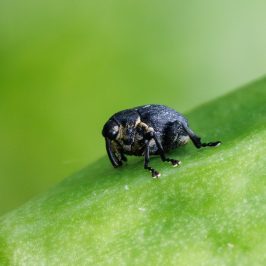It was a gloomy, and occasionally wet, day, and the light was dire, so the great outdoors failed to call me. Around lunch time I realised that the bird feeders were empty, so I dealt with that, and also put some seed on the patio wall. Then I got the camera and waited in the kitchen to see who would take the bait. The usual suspects arrived first – squirrels and jackdaws – followed by blackbirds, collared doves and woodpigeons. After a while some white domesticated doves turned up, and then some chaffinches, a dunnock and a few sparrows, and finally a robin, two starlings and a stock dove.
I originally planned to post one of the starlings, but much as I love them in their fresh plumage I’ve posted almost identical shots in the past, and as far as I can tell I’ve never featured a stock dove before. The dove also required the most patience, because they’re quite shy and retiring birds and almost any other bird (or squirrel) can bounce them off their food.
Stock doves are the least populous of our dove species: it’s estimated that there are around a quarter of a million breeding pairs, compared with about half a million pairs of rock doves and their feral domesticated descendants, a million pairs of collared doves, and five million pairs of woodpigeons. They prefer wooded parkland and farmland and the edges of woods, and unlike woodpigeons are rarely found in towns or gardens. We have them here in small numbers, probably because this is a small village with a lot of mature trees, surrounded by farmland.
Stock doves are smaller than woodpigeons, and about the same size as collared doves and feral pigeons. They’re blue-grey, with a pink chest and an iridescent green patch on the neck, and they have dark wing edges and two small black bars on each wing. They never have white markings on the neck or wings, as woodpigeons do. The call is a two-note coo, but it’s easily confused with that of other doves, which is why I find Lev Parikian’s mnemonic for distinguishing the calls of the stock dove, collared dove and woodpigeon quite useful.
In the UK stock doves are pretty sedentary and rarely move far from their breeding sites, which they may re-use year after year. They’re gregarious, and often nest close together, preferring holes in trees (according to Wikipedia the name comes from the Old English ‘stocc’, which means a stump, post, stake, tree trunk, or log), but also using crevices in buildings, nest boxes, or even rabbit burrows. Each brood usually consists of a pair of chicks – called squabs – but there may be two or even three broods per season.







